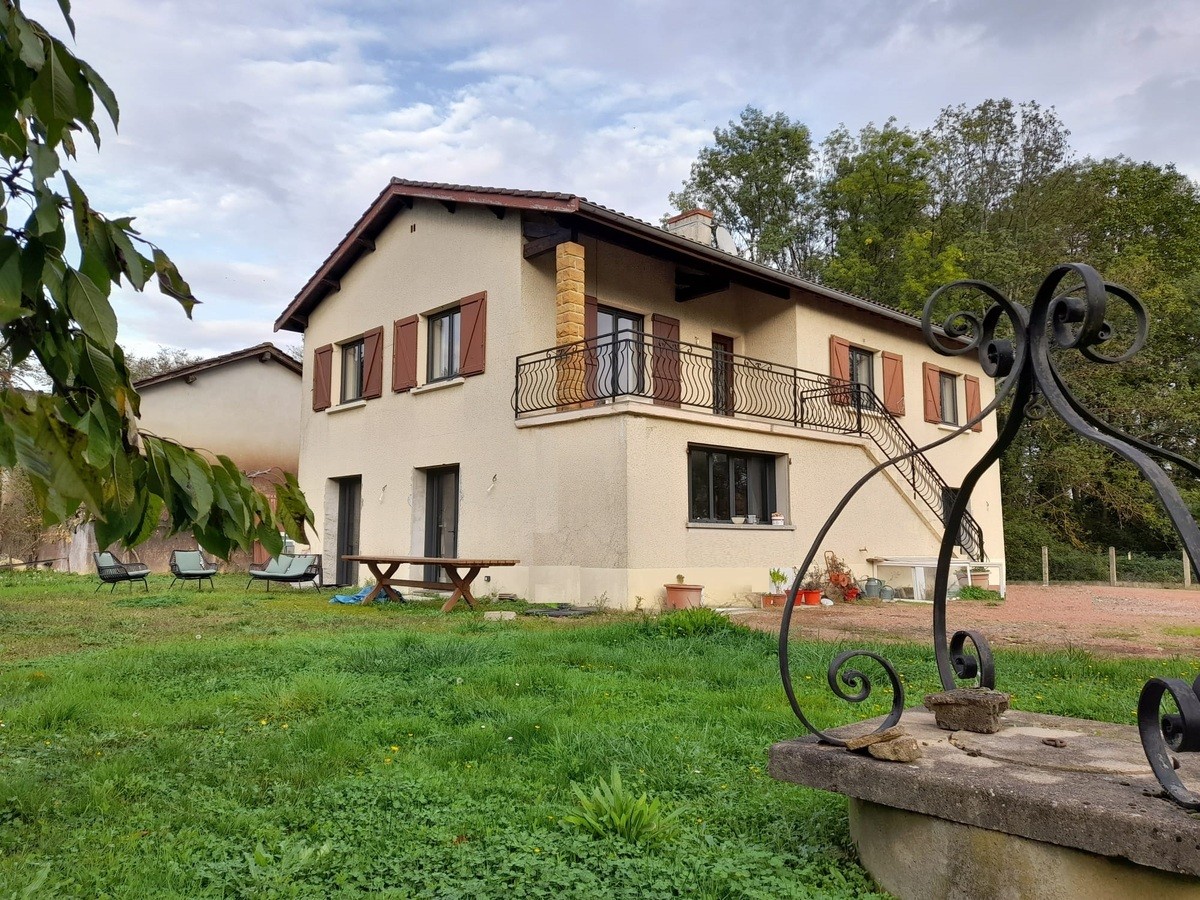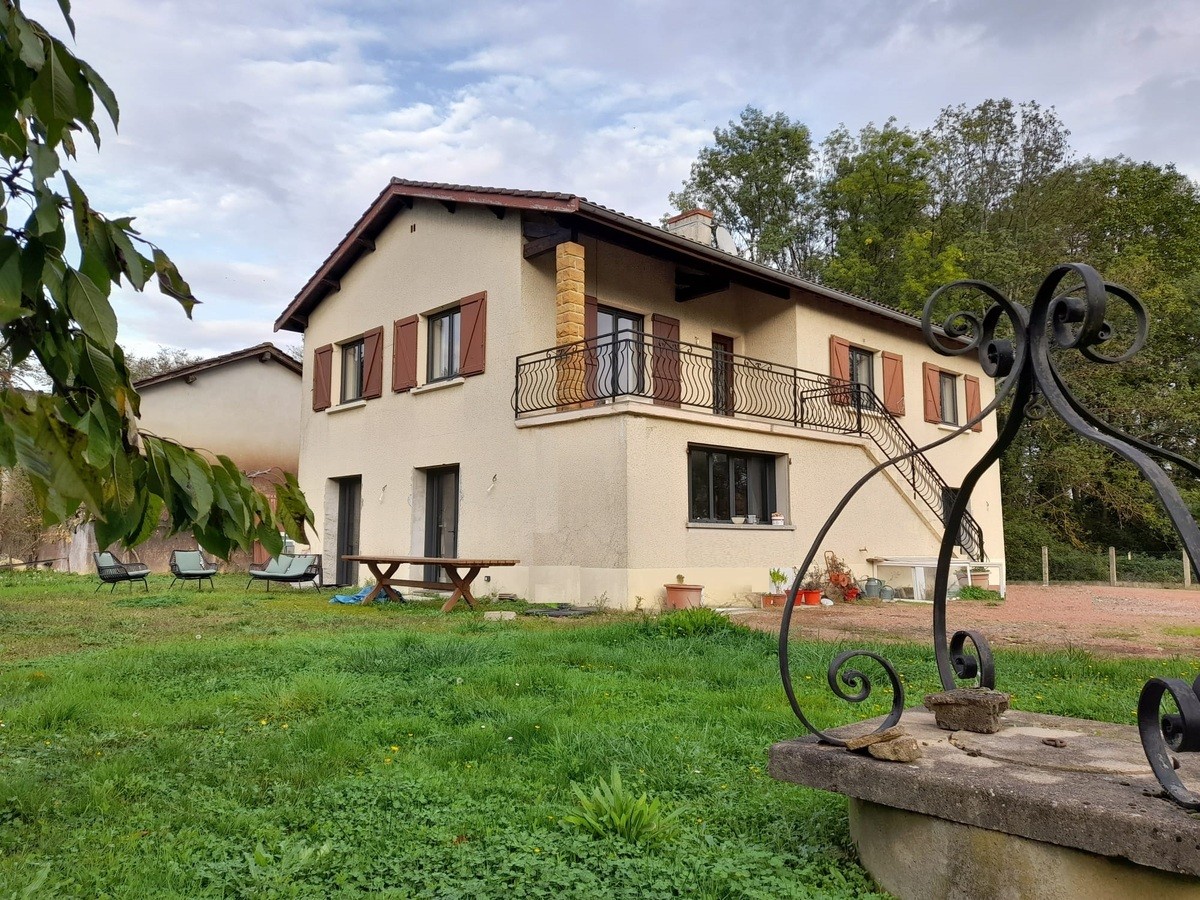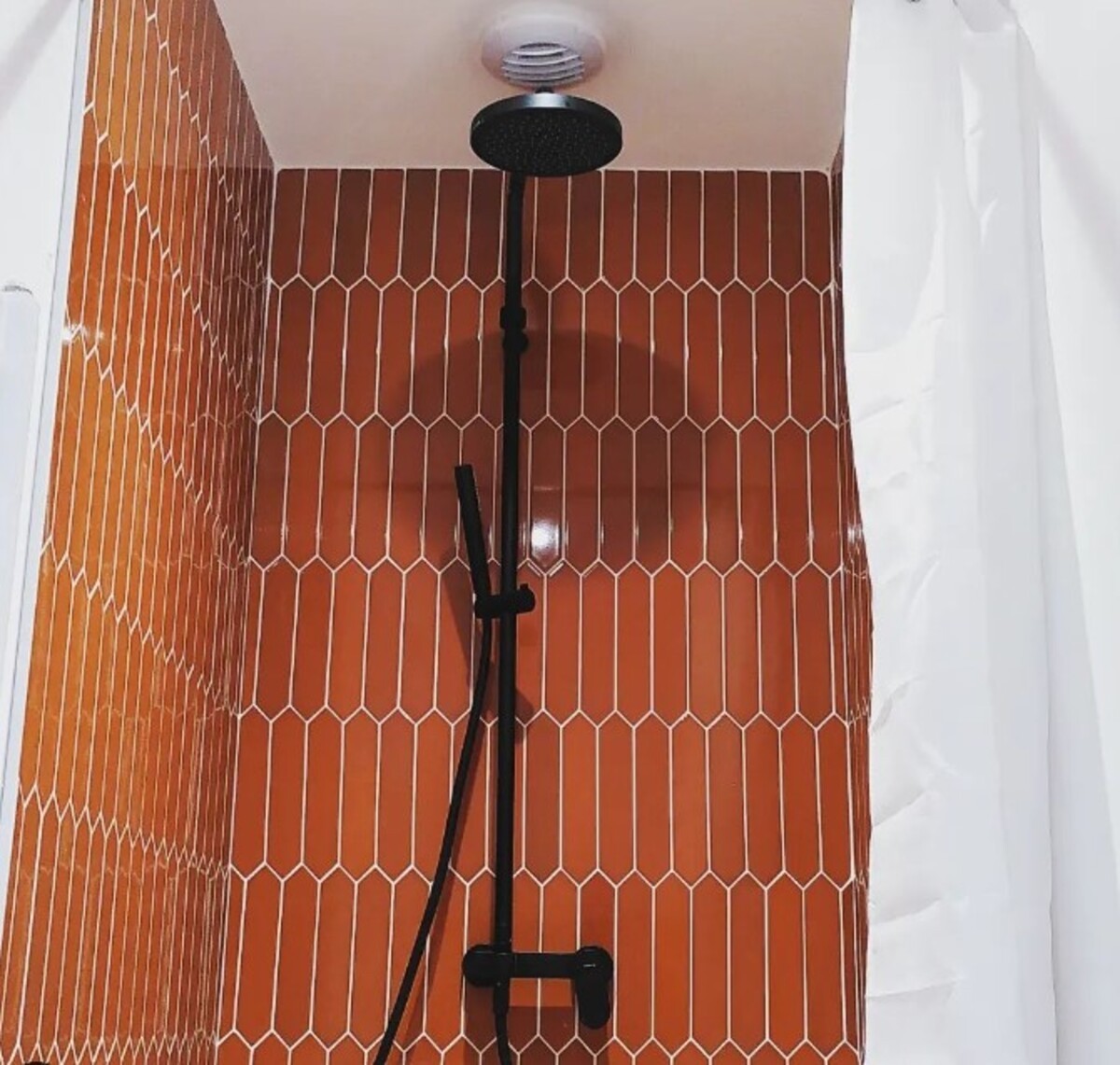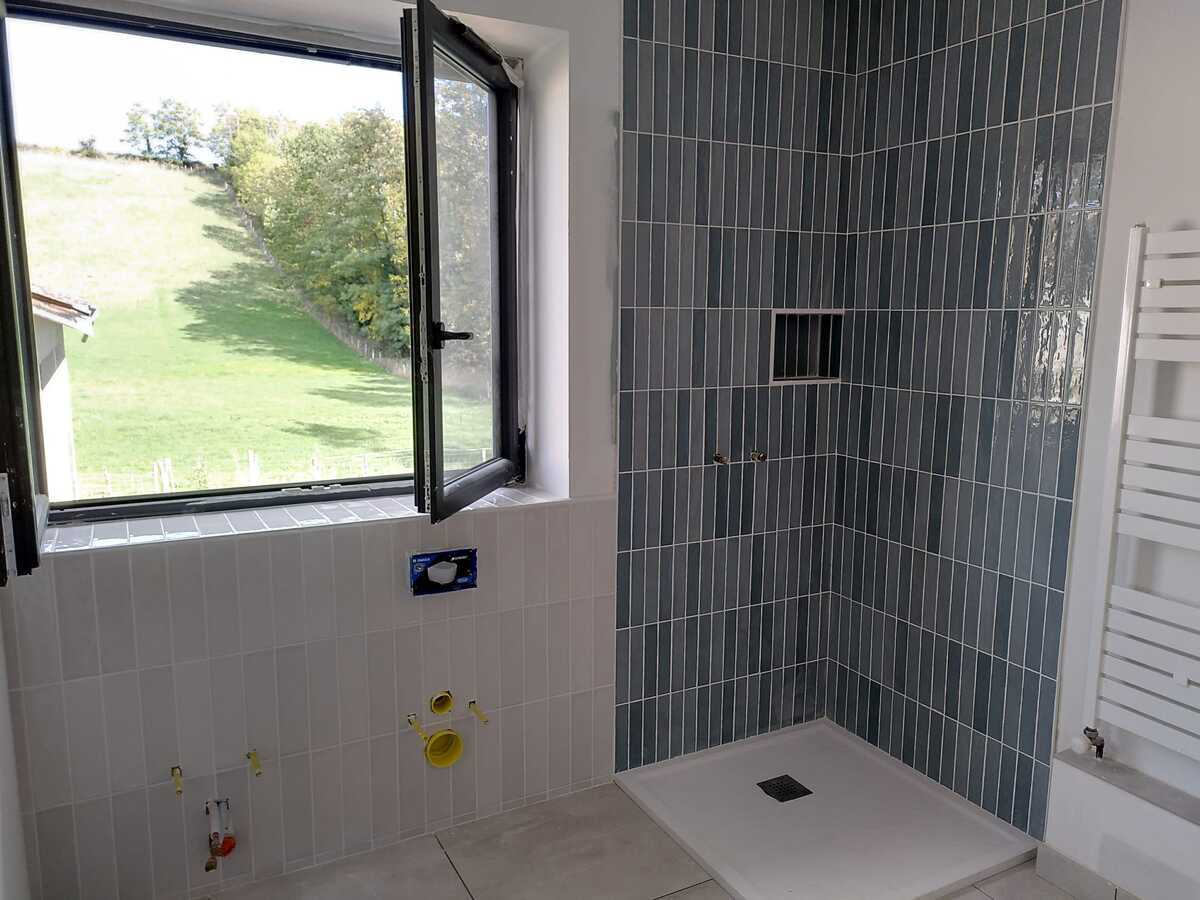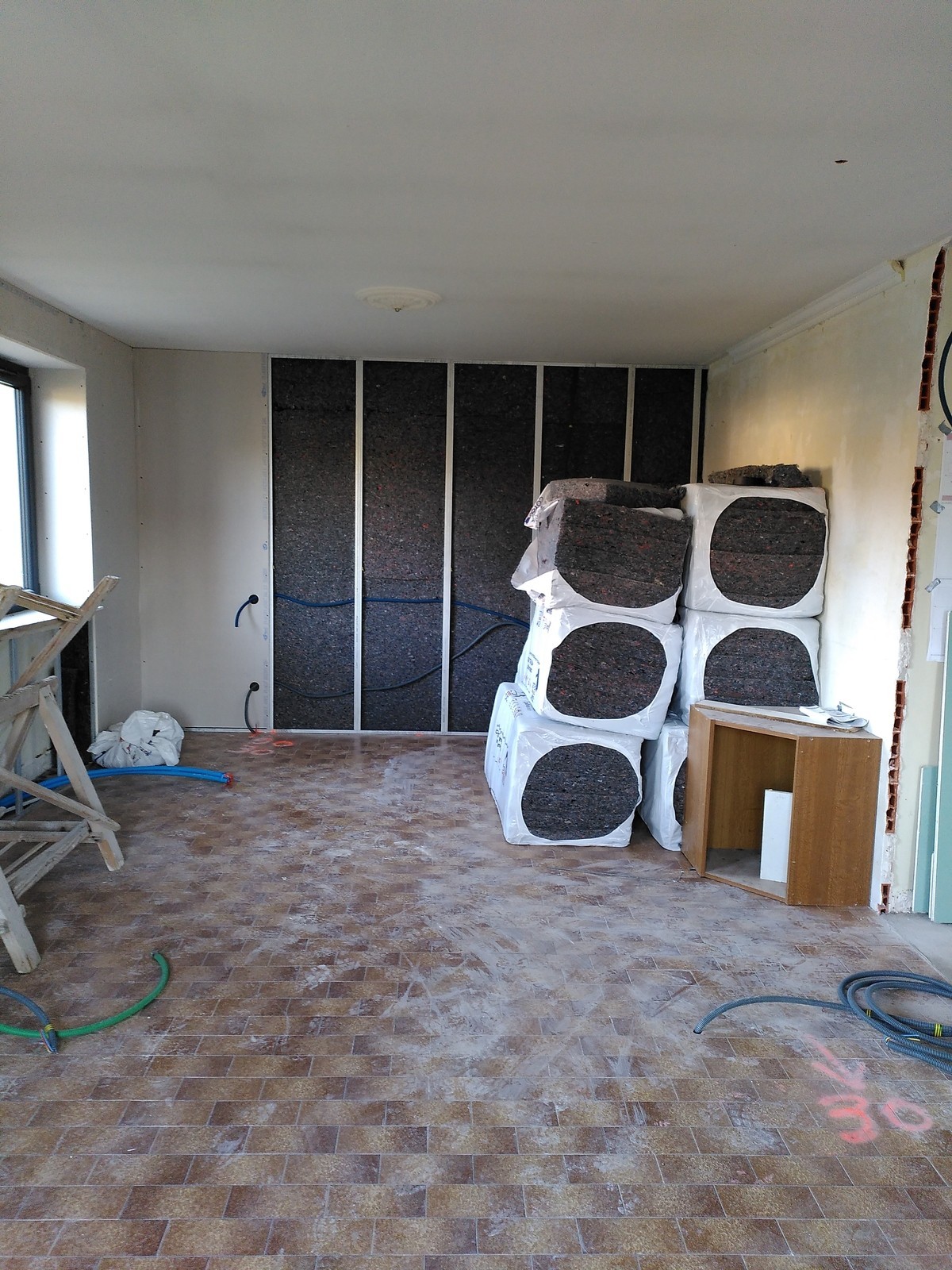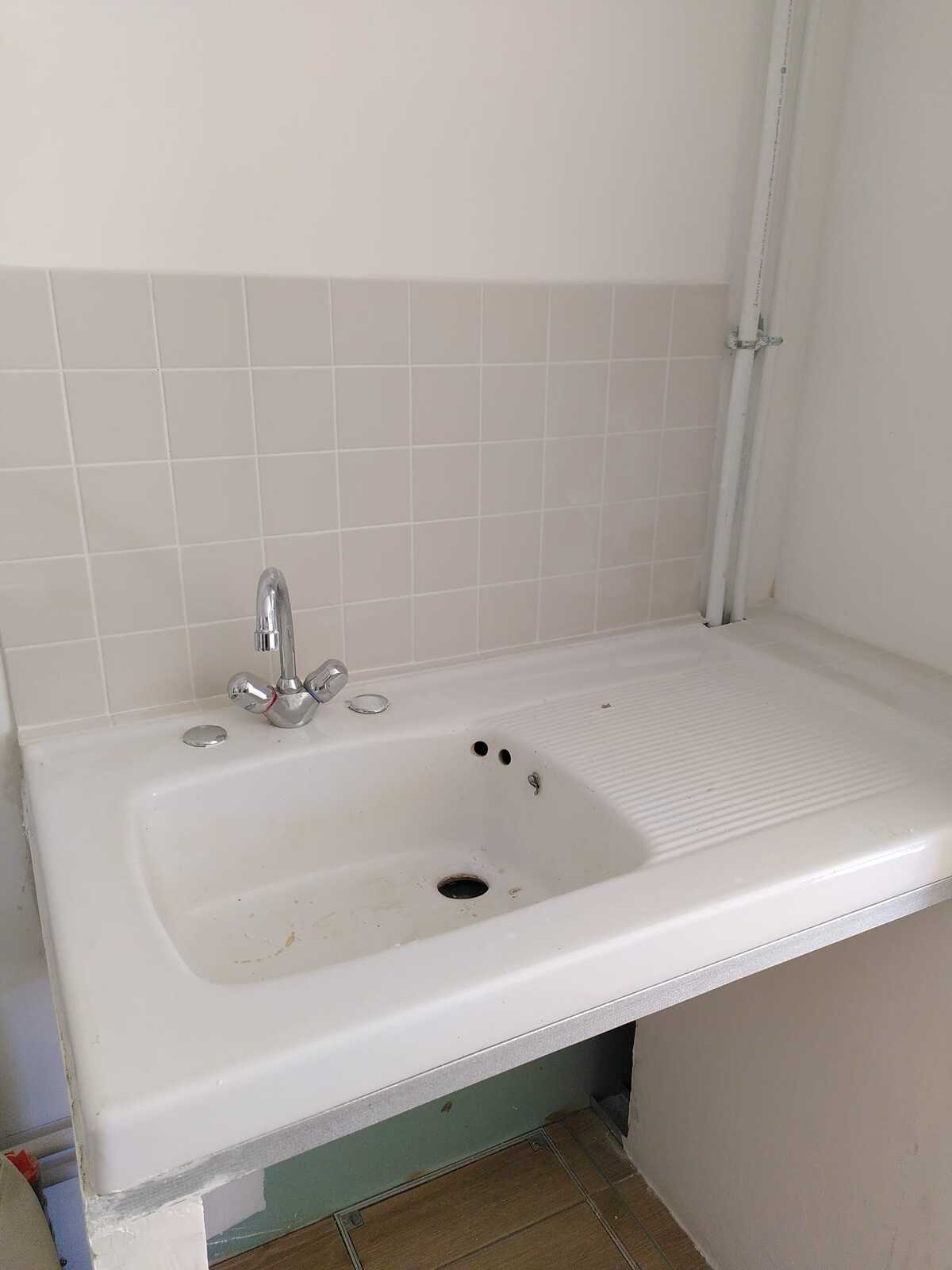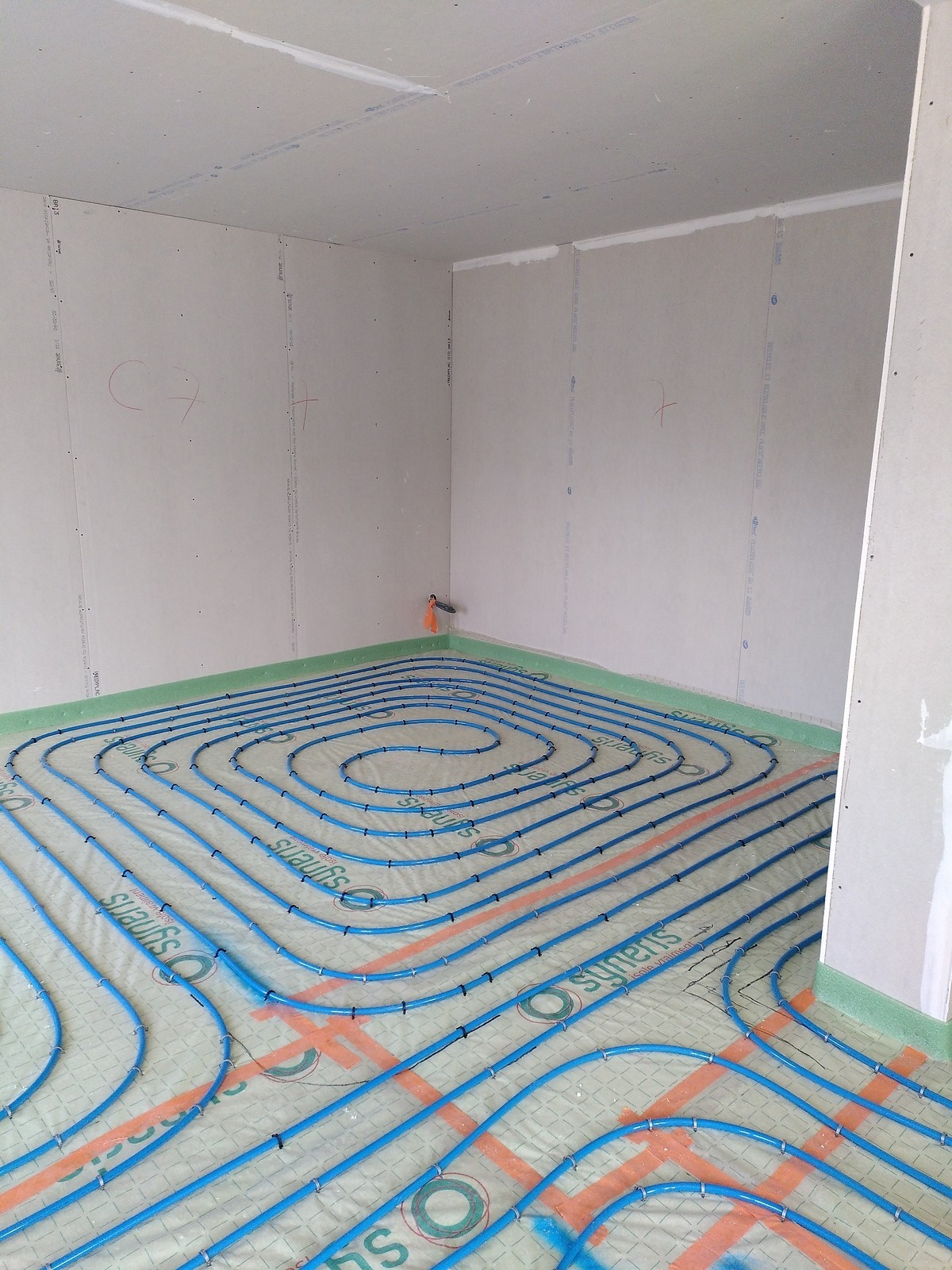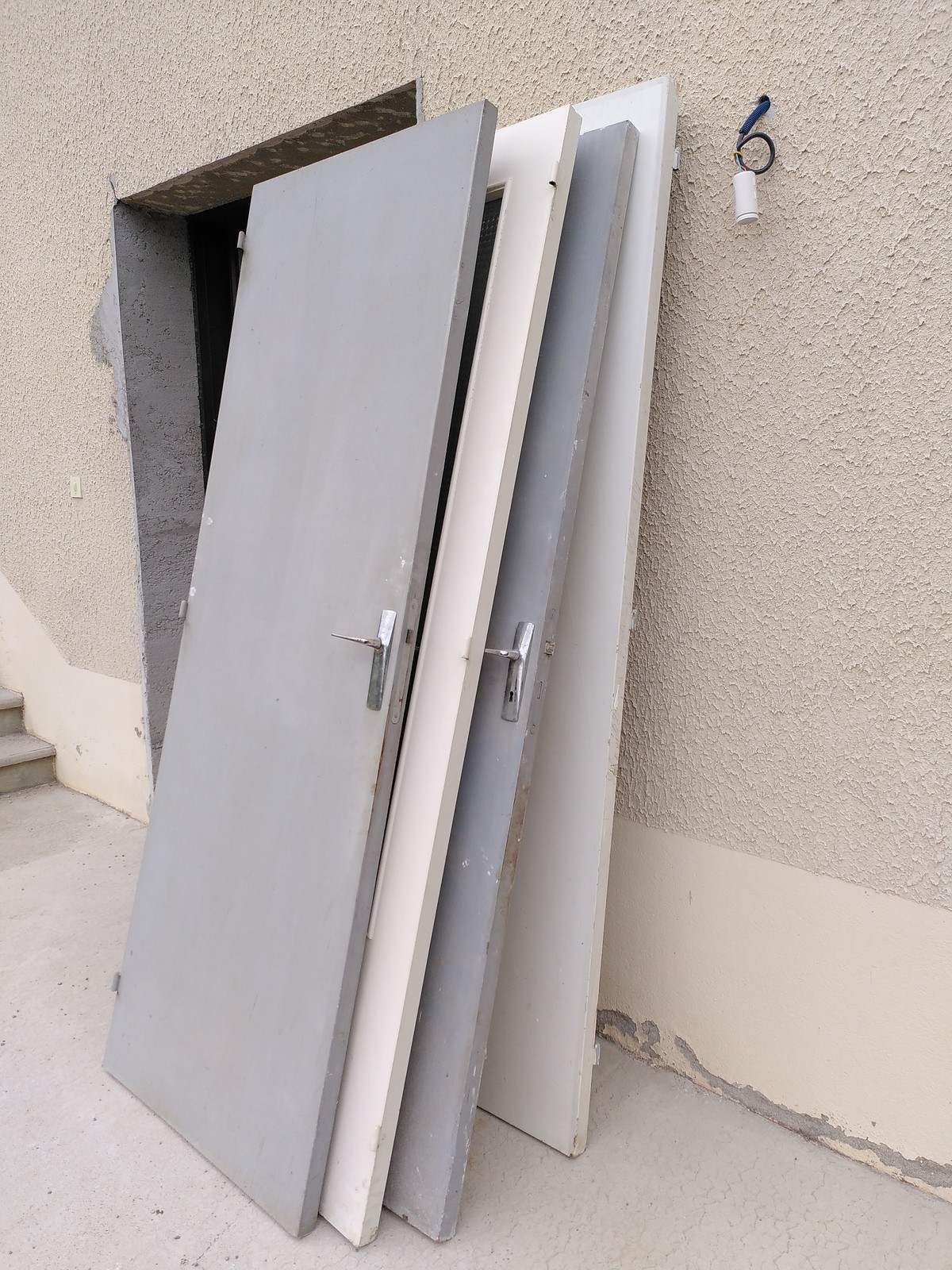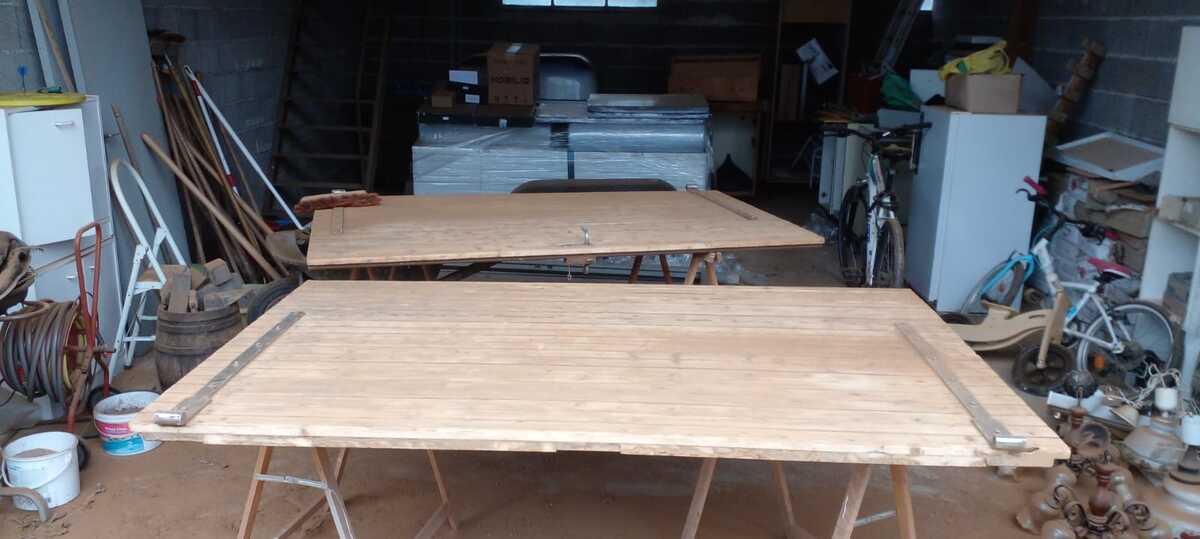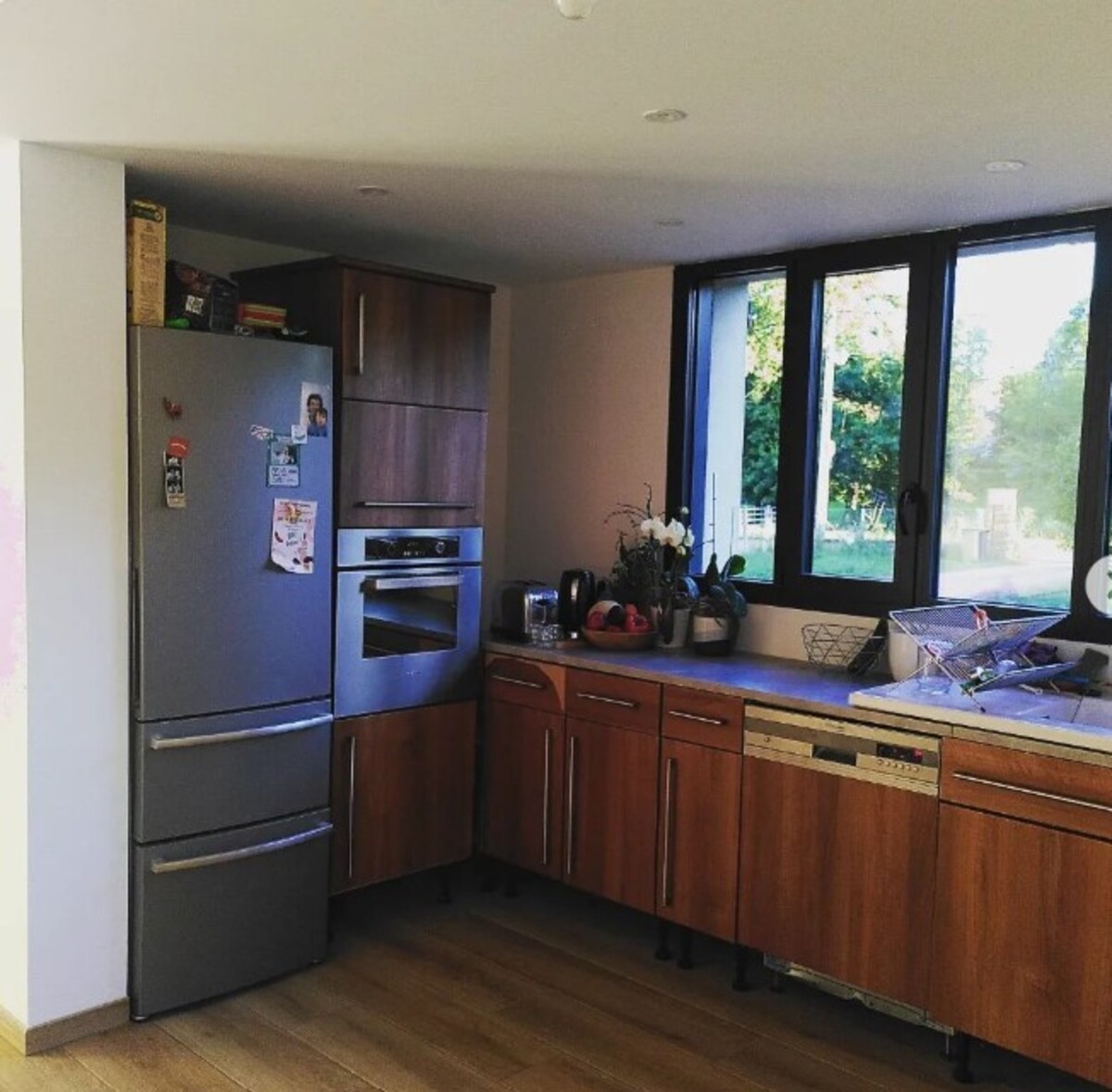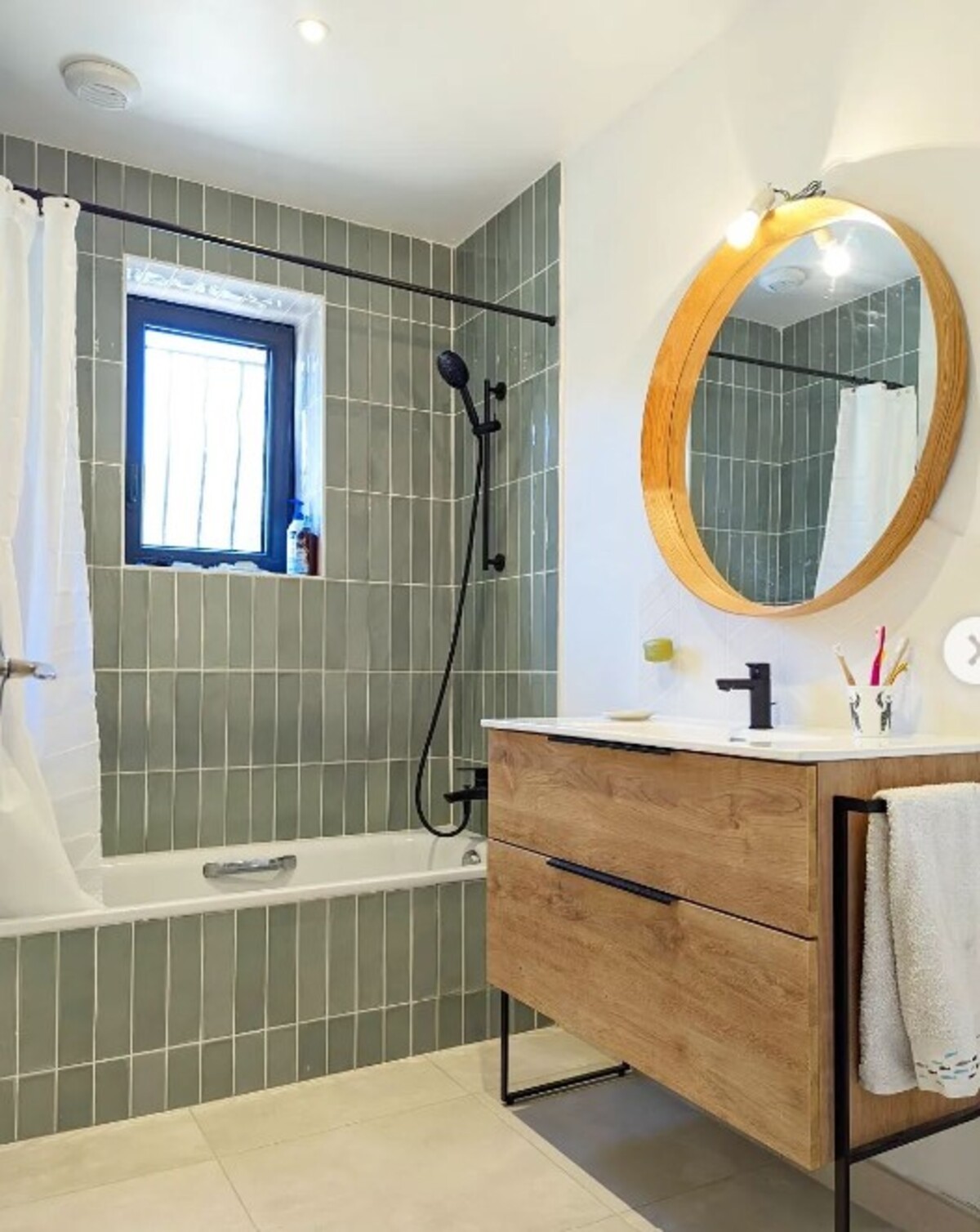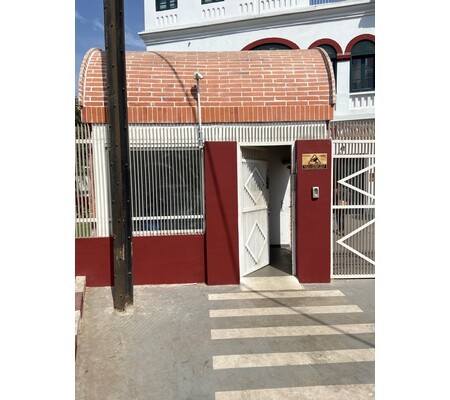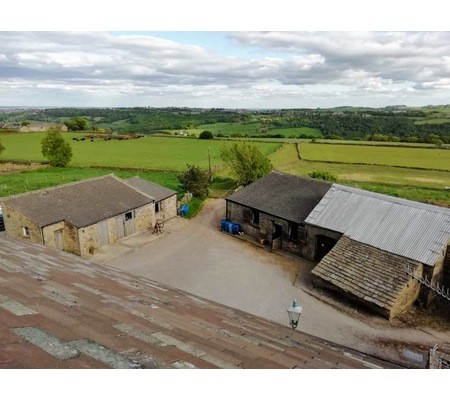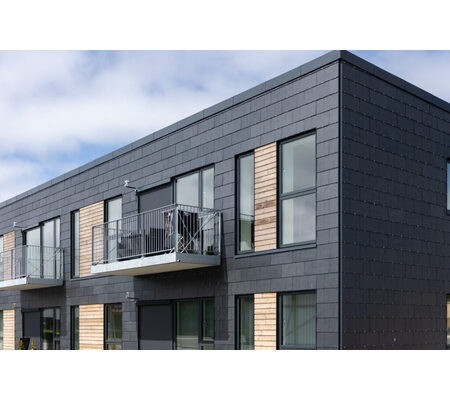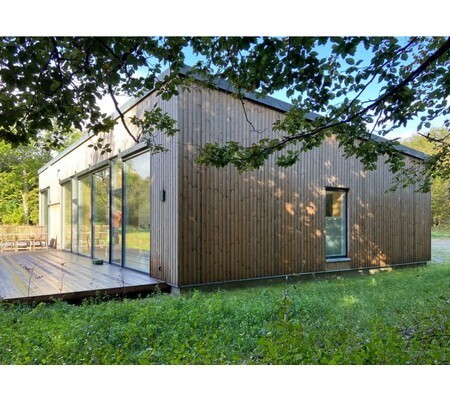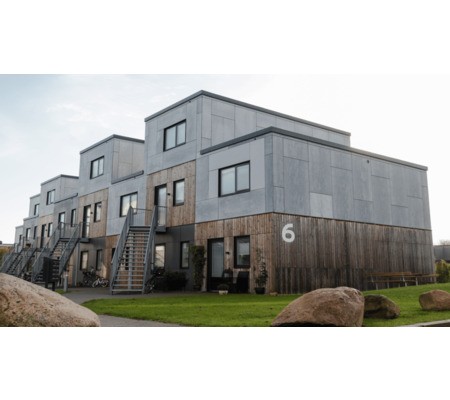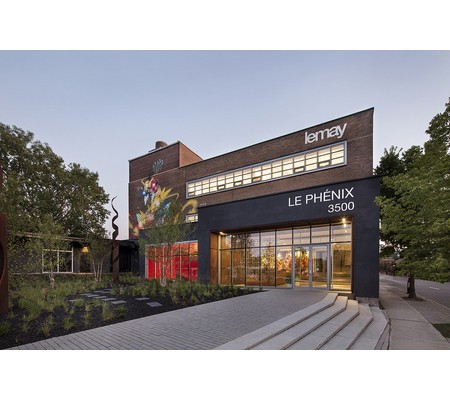Circular House
Last modified by the author on 28/10/2022 - 10:18
Renovation
- Building Type : Isolated or semi-detached house
- Construction Year : 1978
- Delivery year : 2022
- Address 1 - street : 69640 PORTE DES PIERRES DORéES, France
- Climate zone : [Cfb] Marine Mild Winter, warm summer, no dry season.
- Net Floor Area : 200 m2
- Construction/refurbishment cost : 165 000 €
- Number of Dwelling : 1 Dwelling
- Cost/m2 : 825 €/m2
-
Primary energy need
40 kWhep/m2.an
(Calculation method : RT 2012 )
This project won a “Coup de coeur” mention for the Student Prize the Building User’s Choice of the Green Solutions Awards France 2022-2023.
In a context of depletion of raw materials and increasing carbon emissions, each of us must take concrete action to save our planet. Actions in our professional life for the contractor, Construction Manager, etc (...); but also concrete actions as an individual must be taken. The linear economic model can no longer work.
The building sector generates 35% of waste in France. It is from this observation that our project was born. We are two individuals (one who works in the fight against energy poverty and the other in the circular building economy) who wanted to leave the city to settle in the countryside, in line with our values.
Since the best energy remains that which we do not consume, we have opted for renovation rather than new construction. Our renovation will surely not have the budget of a professional, but the goal was to show that even individuals can carry out a complete renovation in a circular economy . We worked outside our working hours, so as not to interfere with our respective work. We have sourced the materials ourselves and made the craftsmen aware of following us in this ecological approach.
Our goals ?
- Improving the energy performance of the building by moving from level F to B;
- Significantly reducing the carbon impact of our site (by using as many products as are already present in the home or from re-use);
- Showing that even individuals can renovate in a circular economy;
- Having beautiful and qualitative result with reused materials;
- Democratizing reuse among individuals - this process can be massiveized and replicated very easily.
Before renovation, the building was a two-storey detached house for residential use built in 1978 for a family of winegrowers. She went on like this:
- Ground floor: garage, cellar, boiler area, room to accommodate pickers;
- 1st floor: living apartment with 3 bedrooms, kitchen, living room, bathroom, WC.
As buyers, we decided to renovate the building by giving it better energy performance and using as many recycled materials as possible to offer frugal architecture.
The new distribution is:
- Ground floor: living room (kitchen, dining room, living room), guest bedroom + shower room, laundry room, storage room, office for teleworking, technical room;
- 1st floor: sleeping area with 3 bedrooms, office/guest bedroom, 2 bathrooms, 1 dressing room.
In a desire for efficiency, we have divided up the roles:
- 1 person was in charge of energy renovation and mobilizing CEE and Maprimerenov aid;
- 1 person was in charge of the circular economy lot (collection of needs, adaptability, sourcing, delivery, storage, renovation).
We are thus probably the only individuals to participate in the Green Solutions Awards, having carried out a renovation project from A to Z bringing together the parameters of circular economy, energy and environmental performance!
Building users opinion
The house withstood the summer heat waves very well. When outside the temperatures reached 35°C/38°C, inside it was 27°C maximum.
In winter, thanks to the very thick interior insulation (20cm) and the perfect southern exposure with many openings, the house has a consumption of 40 kWh/m²/year (heating and water).
If you had to do it again?
We would add solar panels to the roof early in the project.
We would have chosen window doors of a standard width (120x220 instead of 143x220) in order to more easily find reused shutters to integrate into the project.
See more details about this project
https://www.construction21.org/france/articles/h/green-solutions-la-maison-circulaire-le-reemploi-comme-projet-de-vie.htmlPhoto credit
Naomi Scherer
Contractor
Construction Manager
Type of market
Not applicable
Allocation of works contracts
Separate batches
Energy consumption
- 40,00 kWhep/m2.an
- 475,00 kWhep/m2.an
Envelope performance
More information
We have not yet had time to carry out a control audit, nor to have a year of consumption to assess the actual consumption of the building. Similarly, we have not yet done the air tightness test which is planned in the coming weeks.
More information
This is a global renovation project aiming at a BBC renovation level. The initial thermal audit allowed us to define two work scenarios, one allowing a minimum reduction of 30% in energy consumption, the other allowing a reduction of about 400 kWh/m²/year. We opted for the more efficient scenario so that the house could significantly reduce its carbon impact. We also chose to switch to renewable energy for heating and domestic hot water, by installing a wood pellet boiler in place of the old original oil boiler.
Systems
- Water radiator
- Low temperature floor heating
- Wood boiler
- Wood boiler
- No cooling system
- Humidity sensitive Air Handling Unit (Hygro B
- Biomass boiler
- 60,00 %
Risks
- Geotechnical drought (Clay soil shrinkage and swelling)
Urban environment
- 2 752,00 m2
- 3,60 %
- 2 652,00
Product
Circouleur recycled paint
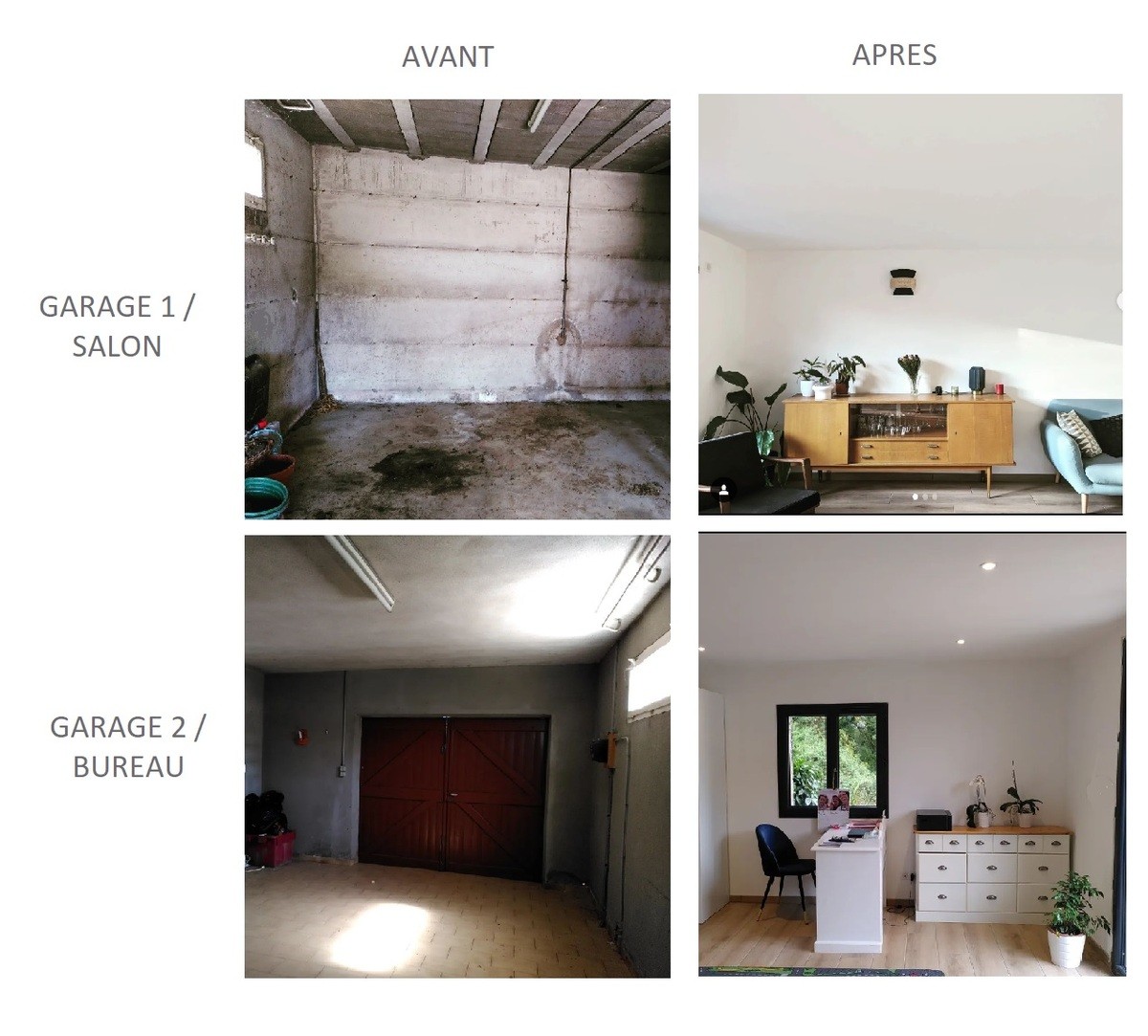
Circouleur
contact[a]circouleur.fr
https://circouleur.fr/Management / Facility management
The only and leading manufacturer of recycled paint in France, CIRCOULEUR recycles and transforms unused paint! By avoiding the incineration of acrylic paints and the extraction of new raw materials, a high-performance ecological paint is produced, with an environmental impact 12 times lower than a conventional paint.
Circouleur also works with people in professional reintegration and with disabilities.
The whole house was painted with these unique paints in France!
The plasterer was surprised and reluctant at first. After seeing the result, he was happy to have discovered the innovation brought by Circouleur!
Permaculture
A permaculture vegetable garden has been created near the well in order to benefit from its water thanks to a pump.
Fruit trees have been planted to promote self-sufficiency of supply, zero km and the biodiversity of the land.
Construction and exploitation costs
- 40 000,00 €
- 2 000 €
- 160 000 €
- 22 500 €
Energy bill
- 1 250,00 €
Reuse : same function or different function
- Indoor joineries
- Outdoor joineries
- Floorings
- Isulation
- Heating ventilation air conditioning
- Plumbing
- Landscaping
- Terrace wood 50m²
- Stone for low wall 5m3
- Taps (11 taps for: 1 kitchen, 2 showers, 3 sinks, 1 laundry room, 1 bidet, 1 bathtub, 2 washbasins)
- 1 bathtub
- 1 laundry sink
- 1 kitchen sink
- 5 cast iron radiators
- Tiled bathrooms: 15m² in total
- Floating parquet: 70m² (the entire parquet)
- Bathroom floor tiles: 25m² (all the floors of the bathrooms and WCs + storage room)
- Interior doors: 16 doors and cupboard doors (all)
- Solid wood door frames: 16
- Garage doors: 1 door
- Windows: 2 windows
- Flaps: 1 pair of flaps
- Cellulose wadding interior insulation: 243m²
- Placard: 270m²
- Painting walls and ceilings: 10 pots of 15l
- Kitchen: 13 boxes + 13 cupboards
- Polyurethane cornices: 25 linear meters
- Metal placo rails: 32 linear meters
- Baseboards: 33m linear
- Terrace wood: from a student accommodation that has never been inhabited, it was removed and reused for the same use in the new home.
- Stone for low wall: from the various construction sites within a 5km radius of the region.
- All fittings (Nobili brand) are old "Show-room" exhibition products that could no longer be sold on the market
- Bath: from a construction site for an Accord hotel. The MOA decided at the end to replace the bathtubs with showers, they were resold via a platform specialized in the reuse of building materials (Articonnex)
- Laundry sink: sandstone sink from the old workshop on the ground floor relocated to the laundry room on the ground floor
- Kitchen sink: sandstone sink recovered from a private individual
- 5 cast iron radiators that were already in the house. We took them apart, cleaned them, repainted them and reinstalled them
- Bathroom tiles: one part from the end of construction sites, the other from the remaining batches from end of collections that could no longer be sold normally; some earthenware was purchased from Minéka, a platform specializing in the reuse of building materials
- Parquet: end of collection from a German manufacturer intended for dumpsters, purchased via a platform specializing in the reuse of building materials (Articonnex)
- Bathroom floor tiles: Remains of an end of construction, saved from the dumpster
- Interior doors: we have recycled all the doors in the house regardless of their condition.
- The garage doors become sliding doors to access the laundry room
- Door frames have been measured and adjusted to fit into the new openings
- The old windows have been transformed into a small greenhouse for the garden
- Shutters: 1 pair of shutters on a new opening that has been created. Purchased from an individual.
- Interior insulation in cellulose wadding. For the walls: Cellulose wadding from recycled cotton; For the attic: Puffed cellulose wadding from old newspapers.
- Recycled and recyclable placo certified "Cradle to Cradle"
- Painting: 95% recycled paint from the Circouleur brand to paint 320m2 of Walls and Ceilings
- Kitchen: 2nd hand kitchen + appliances purchased from a private individual and recomposed according to the configuration of the new kitchen
- Polyurethane cornices: 25 linear meters present in the house. They were deposited, stored and put back after the installation of the partition.
- Metal plasterboard rails: 32 linear meters the remains of the placo rails were used to: build the structure of the closet cupboards, the structure of the laundry room worktop and the structure of an invisible door in place (for the local electric).
- Skirting: 33 linear meters of wood present in 3 bedrooms on the first floor. They have been carefully removed, sanded and rested.
Environmental assessment
- Wooden door frames
- Polyurethane cornices
- All the furniture in the house including: sofas, armchairs, tables, beds, cupboards, shelves, household appliances (oven, toaster, washing machine, hotplates, freezer, hood), furniture for the summer garden ...
- Decoration: crockery, vases, frames, mirrors, lighting (lamps, sconces, etc.), all garden tools (lawn mower, wheelbarrow, watering can, garden hose, shovel, rake, garden stone sink, etc.)
- Metal placo rails
| Categories | CO2 avoided (kg) | Water consumption avoided (m3) | Waste avoided (kg) |
| Outdoor Facilities | 2086.346154 | 13.38353846 | 2054.600629 |
| Covers | 645.1745425 | 1.913230757 | 609.3780794 |
| facades | 59.5 | 0.97 | 2125.31598 |
| Sanitation facilities | 268,417 | 2.24407 | 180.0069652 |
| Insulation | -205.9715136 | 3.463606136 | |
| External joinery | 197,3096667 | 1,718243333 | 81,66293947 |
| Interior joinery | 647,5808587 | 7,835108971 | 337,2679365 |
| Furniture | 685,1044883 | 635,1306112 | 623,1136354 |
| Painting | 251,1255369 | 6,694445018 | 237,8081933 |
| Plumbing | 249,5 | 3,3935 | 666,554546 |
| Floor coverings | 1452,058288 | 247,4464487 | 2505,983198 |
| 28.18182441 | 0.159556202 | 50.02834833 | |
| Roads and other networks | 0 | 0 | 0 |
| CO2 avoided (kg) | Water consumption avoided (m3) | Waste avoided (kg) | |
| TOTAL | 6364.326846 | 924.3523588 | 10173.36853 |
| km by small car | Number of rectangular bathtubs | ||
| Equivalent | 50915 | 6162 | 20 |
| Equivalent trip Paris-Nice | 58.0 | ||
The results of the impact calculation do not include the reuse of the following furnishing materials:
Our objective is not limited to reusing materials from the second work, but also includes the desire not to have recourse to the raw material in the decorative aspect: we buy (or recover) second-hand articles, or in the case appliances, refurbished products.
Economic assessment
- 8 000 €
- 5 %
- 25 000 €
Social economy
Comfort
GHG emissions
- 1,00 KgCO2/m2/an
- 46,00 année(s)
Reasons for participating in the competition(s)
Travaillant dans l'économie circulaire dans le secteur du bâtiment et dans la précarité énergétique, il nous a paru évident, quand nous avons commencé la réflexion sur la rénovation de l'habitation dont nous étions devenus propriétaires, d'améliorer le plus possible la performance énergétique de celle-ci, avec des matériaux écologiques et en faisant un maximum de réemploi de matériaux pour réduire l'extraction de matières premières.
Tous les citoyens doivent apprendre à agir sur tous les niveaux. C'est ce que nous avons voulu accomplir.
Grâce à nos engagements forts envers le développement durable et un monde plus sobre, nous avons rénové le logement :
- en améliorant drastiquement la performance énergétique du bâtiment ;
- en innovant sur les matériaux à réemployer.
Aucun particulier (sans compétences d'architecture) n'avait auparavant mené un projet avec le but ultime d'éviter la quasi-totalité de l'extraction de matières premières dans une rénovation !




